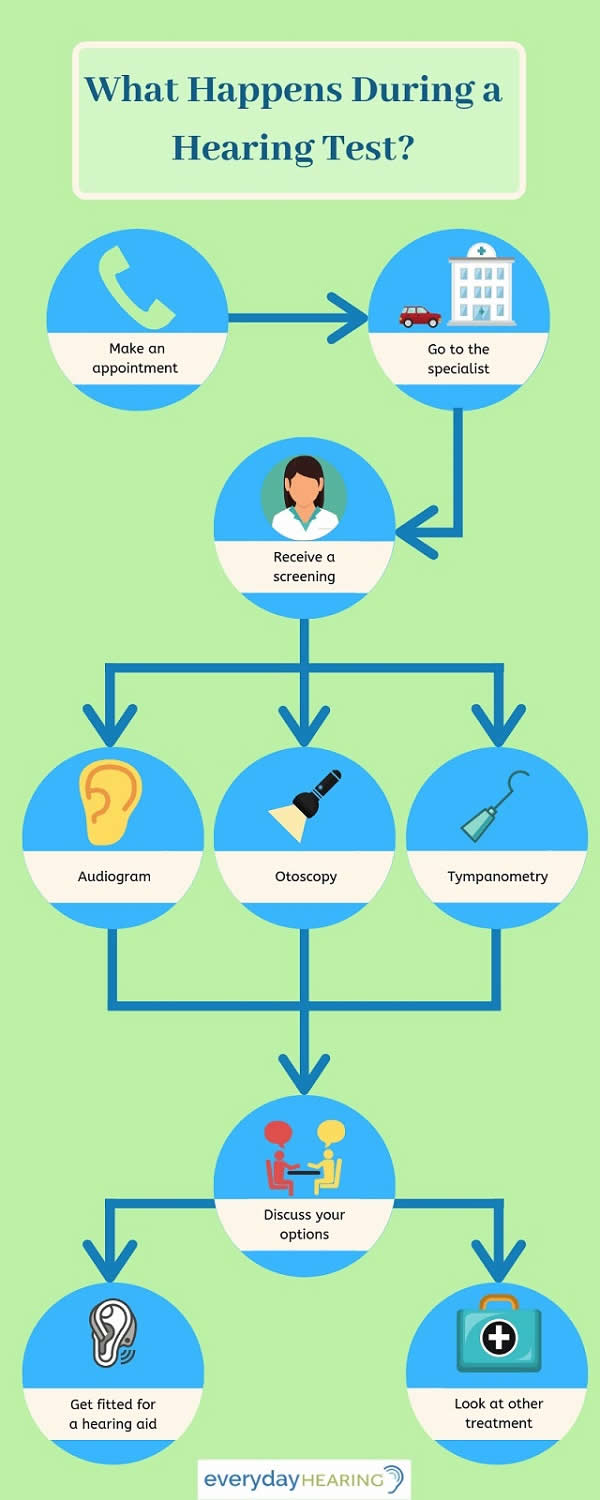Positive Health Online
Your Country

What to Expect from a Hearing Test
listed in sound and music, originally published in issue 263 - June 2020
You may have been to a couple dozen medical professionals throughout your years – whether it’s for your eyes, bones, stomach, etc. As familiar as you might be with these procedures, you might not know what goes on in a hearing test.
If your interest has been piqued, read on to uncover what a hearing test really is – what happens, how they work, and how to arrange one.
What Happens in a Hearing Test?
Once you’ve organized and shown up to your appointment, what happens next?
You’ll have a brief conversation with your hearing specialist about why it is you’ve arranged the appointment – whether your hearing is feeling muffled, you’re missing gaps in conversation, or you’re turning the TV up more and more often.
Once your hearing specialist gets a handle on what your condition might be, they’ll then perform the appropriate procedure. This is typically one of three things:
● Audiogram: What most people would imagine a hearing test to be – the specialist plays sounds of different volume and frequency in order to evaluate the severity and type of hearing loss you have;
● Otoscopy: The specialist uses a focused light to peer into the ear canal, looking for any obstructions that could be impeding your hearing;
● Tympanometry: A probe is inserted into the ear canal. This probe uses vibrations to test the eardrum;
Your specialist may use any combination of these procedures – it all depends on how they work and how you’ve described your condition.

What are the Requirements of a Hearing Test?
What do you need for a hearing test in terms of money, time, or resources? Well, firstly as a bit of good news, hearing tests are free via the NHS. We can’t say they’re free through private coverage, but it’s generally true.
When looking at how long they take, you shouldn’t be concerned about losing a whole day to sitting in a doctor’s office. From the moment you walk in the doctor’s door to the second you leave, you should only be in there for an absolute maximum of fifteen minutes.
And as for what you need to bring – pretty much nothing! If you’ve had a previous test, it's advised that you bring any past results, as well as any previous medical history you might have regarding your ears. There's also no need to bring your own headphones.
How Often Should I have my Hearing Tested?
The best part about hearing tests is that they’re not like semiannual dentist appointments or even yearly doctor’s checkups. You should really only need to do one when you’re young (under the age of 50), as this sets a baseline for your hearing. Any future appointments can then use these results to look for changes within your hearing range.
For example, if you were to go for a hearing test at age 55 without having had one prior, the specialist giving the test has no reference point by which to see if your hearing ability has degraded.
These post-the-age-of-50 appointments should be taking place every three years, as this is when hearing can start to become less reliable.
If a decline in hearing loss is detected, you may have to return a few more times to see how fast your hearing is going, or whether it’s consistently at one level.
Hearing Tests for the Elderly / Children
You might be wondering if hearing tests are any different depending on your age. Well, you may be happy to know that there isn’t much complication here – hearing tests for the elderly are pretty much the same as normal.
The exception is in the case of a patient suffering from dementia or another form of cognitive impairment. In these cases, the hearing specialist might have to be a bit more hands on, reminding the subject of the rules and appropriate responses.
For example, they may instruct the patient to raise their hand upon hearing the noise, rather than giving a verbal response – as this can be a bit easier to understand for those suffering from mental impairments.
With children, it’s slightly different, but still recognizable as a hearing test. Hearing tests for infants are based less on a conversation (hopefully that’s obvious) and more on gauging the baby’s reaction to audio stimuli.
The first of these infant hearing tests is the otoacoustic emission test (OAE), which involves putting a soft earpiece into the baby’s ear and seeing if they respond to a soft clicking noise.
If this fails, the doctor will perform the automated auditory brainstem response (AABR). This is a bit more complicated (but still entirely harmless), and involves sensors and headphones being placed on the baby’s head. Similar clicking noises are played while the acoustic nerve (the sound-related part of the brain) is monitored using electrodes. The baby’s hearing test will pass or fail based on these measurements.
Wrapping Up
There you have it – a comprehensive crash course on hearing tests and what they involve. Of all the medical procedures, they’re some of the quickest and least invasive. If you’ve decided to go and get one, we wish you the best of luck!
Comments:
-
No Article Comments available